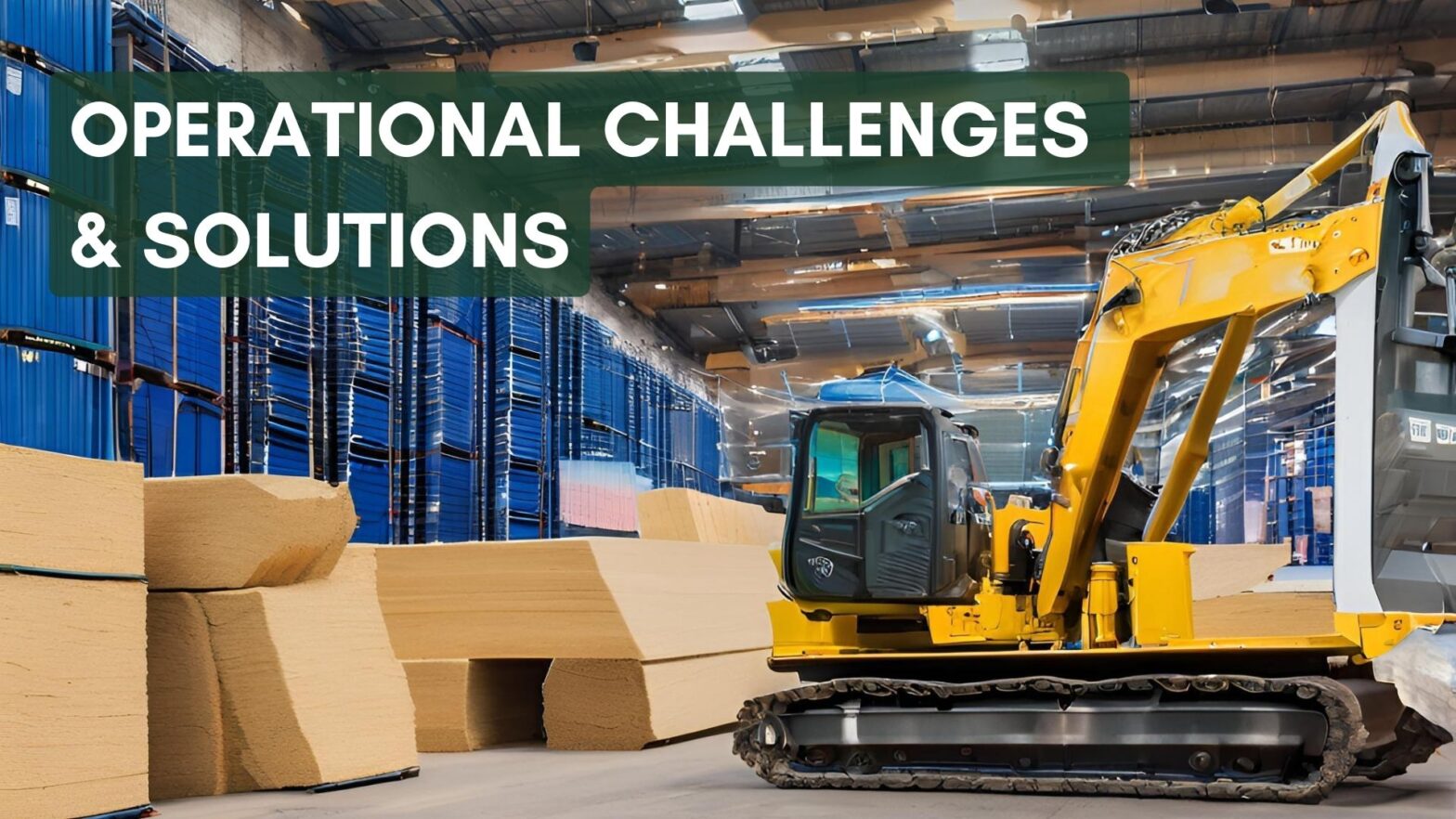“1. Segment the Yard by Movement Frequency
Place fast-moving SKUs (e.g., framing lumber, OSB, treated 2x4s) closest to loading areas to reduce handling time.
Medium-turn items can be placed behind them, with slow movers stored in outer zones or higher racks.
Use ABC inventory logic:
A items (high turnover) — near loading zones
B items (moderate) — central
C items (low turnover) — farther out or vertical storage
Why it matters: Minimizes forklift travel, speeds up order assembly, and reduces congestion during peak hours.
- Designate Clear Traffic Flow for Vehicles and Equipment
Establish one-way traffic patterns for trucks and forklifts to prevent bottlenecks.
Use striping, signage, and barriers to separate pedestrian paths, storage zones, and vehicle lanes.
Implement a staging area near the loading dock to prep orders before loading.
Why it matters: Prevents accidents, reduces cross-traffic, and improves order flow.
- Standardize Storage Zones and Label Everything
Use clearly marked zones (e.g., framing lumber, siding, roofing, fasteners).
Add visual signage, floor paint, and digital maps for quick identification.
Label all product rows and stacks with SKU codes and descriptions.
Why it matters: Enables faster picking, minimizes picking errors, and simplifies onboarding for new staff.
- Implement a Real-Time Yard Inventory System
Use barcode scanners, RFID tags, or mobile tablets to track product movement.
Ensure inbound shipments are immediately logged into your ERP or WMS.
Sync inventory with your eCommerce portal or sales system to show accurate availability.
Why it matters: Improves inventory accuracy, reduces lost items, and supports real-time customer quoting.
- Create Pre-Pick and Staging Zones
Allocate space for pre-picked loads, especially for early morning jobsite deliveries.
Use pallets or carts labeled by customer name/order number.
Establish a system to prioritize orders by delivery schedule or will-call pickup time.
Why it matters: Keeps loading teams organized and reduces last-minute scrambling during peak dispatch hours.
- Maintain Equipment and Material Handling Standards
Assign dedicated forklifts or yard trucks to certain material zones to reduce cross-use.
Perform daily safety checks and maintenance to avoid downtime.
Train all staff on safe stacking heights, load limits, and handling best practices.
Why it matters: Prevents breakdowns, improves safety, and extends equipment life.
- Schedule Regular Cleanup and Reorganization
Block time weekly for yard “reset” activities — restacking, removing scrap, sweeping lanes.
Use this opportunity to review SKUs that are overstocked or obsolete and rotate as needed.
Conduct cycle counts as part of the cleanup process to maintain accuracy.
Why it matters: Keeps the yard safe, efficient, and ready for high-volume days.
- Use Visual Dashboards and Job Boards
Post daily delivery schedules, inbound freight alerts, and staging priorities on a shared screen or whiteboard.
Provide order visibility to yard crews and drivers without requiring constant supervisor check-ins.
Integrate with digital dispatch or ERP for live updates.
Why it matters: Increases visibility, reduces miscommunication, and keeps teams aligned in real time.
- Cross-Train Staff for Flexibility
Train workers in multiple zones and roles so they can cover absences and peak hours.
Rotate responsibilities to avoid burnout and increase overall awareness of yard operations.
Why it matters: Builds resilience and prevents bottlenecks when team members are absent or turnover is high.
- Review Yard Performance Metrics Regularly
Track KPIs like:
Order pick time
Loading accuracy
Safety incidents
Inventory variance
Use the data to adjust layouts, retrain staff, or invest in new equipment where needed.
Why it matters: Continuous improvement keeps the yard agile and aligned with business growth.
Bonus: Consider Seasonal Layout Adjustments
If your product mix shifts with the season (e.g., landscaping vs. roofing), reconfigure your yard layout quarterly to reflect peak SKU demand.
Conclusion
A well-organized, high-turnover building yard isn’t just cleaner or safer — it’s a profit center. With the right layout, technology, and operational discipline, your yard can become a strategic advantage by reducing delays, improving customer service, and lowering labor costs.


